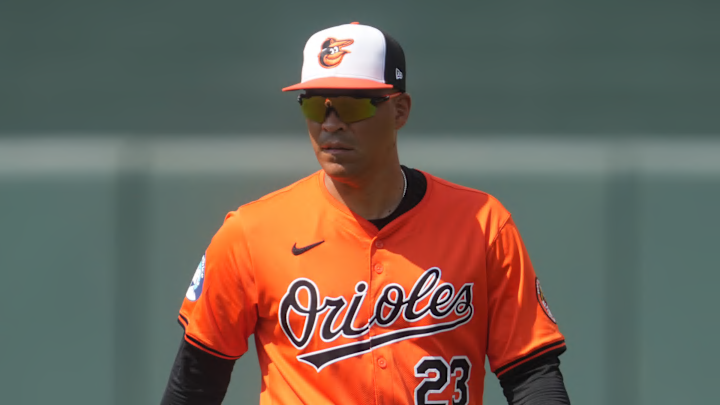If there was any doubt about where the buck stops in Baltimore, the answer arrived the moment Craig Albernaz took the chair and Robinson Chirinos began packing his binder. This is how power transitions actually look in baseball: a new manager arrives with permission to curate the room, and the front office signals, subtly or not, that the next phase of the project will be judged with fewer qualifiers.
The Orioles’ window isn’t opening anymore; it’s been open. With a young core that has already shouldered October expectations, the small margins now live in how you prepare. That’s the ecosystem Mike Elias hired and now wholly owns.
Robinson Chirinos' exit is a reminder it’s all on Mike Elias now
Chirinos’ exit underscores the point. He didn’t storm out; he’s reportedly seeking opportunities elsewhere, the predictable churn when a new manager sets his own staff. But the optics matter. Chirinos arrived as Brandon Hyde’s bench coach before 2025, bridged the post-Hyde turbulence under interim Tony Mansolino, and still didn’t fit the blueprint once Albernaz was hired in early November.
That’s not an indictment of Chirinos so much as a reminder that this is Elias’ blueprint in pen, not pencil. If Baltimore so much as wobbles in 2026, the conversation won’t orbit the dugout for long, it will orbit the architect.
The timeline is important here. Hyde’s long, stabilizing run gave way to a midseason handoff to Mansolino after a poor start to the 2025 season. Mansolino kept the floor steady while the front office worked the phones and vetted candidates. Albernaz steps in with a clean mandate: modernize the daily process and install a communication chain that runs seamlessly from analytics prep to bullpen gate. Bench coaches are the connective tissue in that chain. When a front office swaps that ligament, it’s signaling a different tempo for the whole operation.
It also reframes the standard for 2026. Baltimore’s strengths, homegrown star power, elite athleticism, and scalable depth, are already in house. The vulnerabilities, swing-and-miss relief volatility, lineup balance in the bottom third, the occasional defensive lapses are fixable with coordination as much as with payroll.
That’s precisely where a GM’s fingerprints show up. Did the offseason acquisitions align with the manager’s deployment preferences? Did player-dev messaging match what hitters and pitchers heard once the lights came on? Did the front office and the bench speak the same language with runners on and the game screaming for a micro-adjustment?
Chirinos’ departure, then, becomes less about personalities and more about alignment. Bench coaches sit at the crossroads of scouting notes, advance reports, biomechanics, and human temperature checks. If Albernaz is Elias’ hire, his bench voice will be Elias’ choice by extension. When those choices click, you see it in cleaner game scripts. When they don’t, you feel it in the standings and in the postgame, where “process” starts sounding like a fig leaf.
Fair or not, “blame Elias season” is exactly how 2026 will be framed if the Orioles falter. That’s the exchange rate for years of credibility building drafts, international signings, and smart trades: once the core matures and the manager is your guy, the excuses evaporate. The league is ruthless about that, especially in an AL East that punishes drift. Staff changes are the visible tells of invisible standards. With Albernaz installed and Chirinos moving on, Baltimore just told everyone what those standards are, and who will be judged by them.
